Dom Robinson reviews
Microsoft
- RRP: £129.99 (Originally £299.99)
- Amazon: £124.99 (April 2003)

Xboxis the first time Microsoft have entered the console market, but they’vecertainly listened to what the public have been wanting from a games machinesuch as a hard drive on which to save your game positions, the ability to ripCD tracks to play within the games and a broadband modem for when online gamingis launched later in the year (abroad at least, since the UK date has yet to beset).
The console received a rather unfair press reaction upon its launch, due toit not selling as fast as was initially expected and, hence, the reason whyit didn’t sell out on launch as the last-released console, theSony Playstation 2,had. A price war with the Nintendo Gamecube didn’t help as they slashedtheir price to £130 in time for launch day (May 3rd 2002), just oneweek after the Xbox’s price cut but having had announced this after Microsoft’sannouncement of the then-impending price cut.
Look beyond that at what a console can actually do and although not many willbe able to afford more than one console at a time, especially since they allrequire individual accessories for extra controllers, connections, etc., theXbox has a lot going for it.
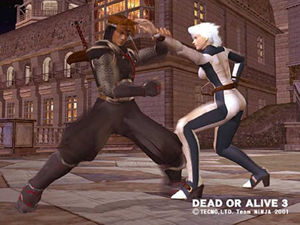 The first thing you’ll notice about the Xbox is it’s size. It’s big. Muchbigger than just about any other console that’s gone before it and almostmatches the size of the average VCR. However, if you’re an AV nut and haveyour equipment set up in a rack or a tower you should be able to find a spacefor it.
The first thing you’ll notice about the Xbox is it’s size. It’s big. Muchbigger than just about any other console that’s gone before it and almostmatches the size of the average VCR. However, if you’re an AV nut and haveyour equipment set up in a rack or a tower you should be able to find a spacefor it.
All the connections on the unit are very accessible. Starting from the front,there’s four controller ports, with the power and disc tray buttons in themiddle. Round the back there’s simply a slot for the power lead, modem connection(providing you have a broadband-enabled phone line) and an all-in-one AVport, as opposed to the PS2’s separate optical digital output.
Since the console comes only with the standard composite phono video andaudio lead connectors, those with an eye for quality will want to upgrade toone with a SCART connector and/or s-video, as well as Dolby Digital and DTS sincemany of the Xbox games make use of that audio facility. I wanted a lead whichcombined all three, but it was very hard to track down given that only Joytechappear to make one that does. It costs £14.99 and since it only appearsto be available in branches of Dixons, this is the only time you’ll find merecommending a trip to Dixons to actually buy something, as opposed to justnipping in to annoy the staff by asking them a difficult question like“what’s overscan?”
Atop the unit forms an image of a large black “X”, with grill edges eitherside and a green circle with the console’s title inside.
No ports are necessary for memory cards though, since that’s what the harddrive’s for. It’s also worth noting that the controllers come with vibrationbuilt in, so no need for such an add-on, although the controllers do come withtwo slots in their head for later additions.
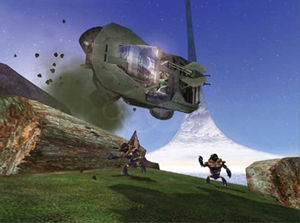 What happens when you switch the Xbox on? A thumping, vibrating sound is heardas a green nucleus, keeping with the colour theme, manifests itself as ifpart of a genetic science experiment, before the ‘camera’ pans out to revealthe Xbox logo.
What happens when you switch the Xbox on? A thumping, vibrating sound is heardas a green nucleus, keeping with the colour theme, manifests itself as ifpart of a genetic science experiment, before the ‘camera’ pans out to revealthe Xbox logo.
When the menu appears, three settings are presented: Memory, Music and Settings,with the appearance onscreen as if being set in a time tunnel, as the backgroundeeriely shifts backwards and forwards, changing as it goes and to the soundof distant thunder and bizarre computer noises. Occasionally, you’ll also hearwhat sounds like voice transmissions being picked up and played out like thevoice synthesiser on a BBC Model B. Very odd, but quite cool. As you enter thesub-menus there’s a “zooming” sound effect as you shoot through to them.
Memory refers to the amount of space on the hard drive reserved for yourgame saves, in the form of blocks. At first, and unless you save a lot ofgames on the drive, it says there are “50000+ blocks” available, even thoughI understand there are over 100,000. Either way, there’s more than enoughspace available.
Music: Here’s where you can play your audio CDs, with a small visualimage akin to that of Windows Media Player as the console interprets what ithears. You can also copy the audio tracks onto the Xbox’s hard drive so asto form the soundtrack for any game you wish to play which supports thisfeature, if you don’t like any or all of the tracks within the game itself,with the option to rename the newly-recorded tracks correctly, but this can berather cumbersome with the Xbox controller compared to a keyboard.
Note, that the Xbox doesn’t have a recordable CD drive so you can’t put theseback onto another CD.
The Settings section allows you to alter the currentdate and time (with an option for time zone and daylight savings, i.e.putting the clocks back and forwards twice a year), menu language (English,Chinese, German, French, Spanish, Italian), Audio (a choice of Dolby Surround,Stereo or Mono, plus the enabling of Dolby Digital and DTS for those with theappropriate equipment) and Video (4:3, Letterbox 16:9 on a 4:3 TV, and anamorphic16:9, plus support for PAL-60)
The “Auto Off” feature will shut down the console after six hours of inactivity,which is handy for those with children that would otherwise leave it on allday long whether they’re using it or not, while the ‘System Info’ selectionjust gives a warning not to copy the Xbox software within the console.
Between this and the PS2’s menu system, neither are overall better than theother, but I think both are equally fantastic.


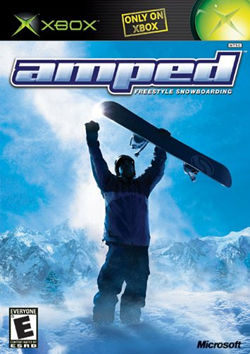
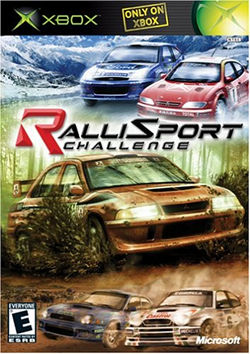 Four of the Xbox’s launch titles.
Four of the Xbox’s launch titles.Click on the covers to see the reviews.
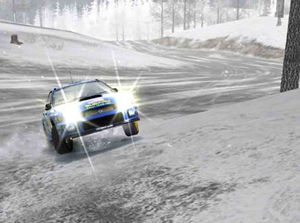 Games are the primary reason for buying an Xbox and of the 40 or so launchtitles, the highlights definitely include first-person-shooter Halo,martial arts entertainment in Dead or Alive 3 and driver ProjectGotham Racing, a follow-up to the Dreamcast’s MSR. Reviews forall games, with more to come, are listed in the “Xbox Reviews” link on theleft-hand menu.
Games are the primary reason for buying an Xbox and of the 40 or so launchtitles, the highlights definitely include first-person-shooter Halo,martial arts entertainment in Dead or Alive 3 and driver ProjectGotham Racing, a follow-up to the Dreamcast’s MSR. Reviews forall games, with more to come, are listed in the “Xbox Reviews” link on theleft-hand menu.
Of course, with many titles coming out for more than one of the latest threeconsoles, a machine will stand or fall depending on its exclusives, whichinclude the first and last of the three above, as well as two other titlesfor which reviews will be coming soon, as I type this (early July 2002),the latest in the series that began with Abe’s Oddysee, Oddworld:Munch’s Oddysee and the mystical Azurik: Rise of Perathia.
The downside is that many of these games are £44.99 when new and, unlikethe PS2 there’s no titles from a previous console which will be compatible onthis unit, but the potential is clearly there for games of the future andif you shop around there should be a good deal out there.
Of course, there have been a few early titles which haven’t lived up to theirpromise such as Amped, Blood Wake and Blood Omen 2. Graphically,they impress, but deep down you have to question where’s the beef? See thereviews for individual reasons on each game.
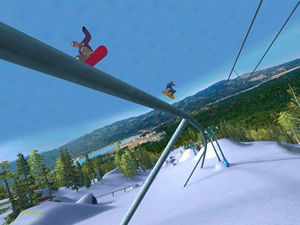 Also, like the PS2, the Xbox has the ability to play DVDs and via both SCARTand S-video, whereas the PS2 had initial ‘green screen’ issues when watchingvia SCART if it had to go through anywhere else apart from the TV, but in orderto watch the DVDs you will need to purchase a DVD remote control (around £30),the sensor for which plugs into one of the controller ports.
Also, like the PS2, the Xbox has the ability to play DVDs and via both SCARTand S-video, whereas the PS2 had initial ‘green screen’ issues when watchingvia SCART if it had to go through anywhere else apart from the TV, but in orderto watch the DVDs you will need to purchase a DVD remote control (around £30),the sensor for which plugs into one of the controller ports.
It’s rather on the sneaky side that an extra purchase would have to be madefor this, but not for Microsoft when you consider the advantage for them.
Every DVD player attracts a percentage cost which must be paid out by themanufacturer, thus a form of tax. Although it’s the unit which plays the DVDs,this tax is only limited to a percentage of the cost of the remote controlsince that is what enables the DVD facility. Strange, but true.
On the plus side, the video and audio quality when watching DVDs is excellentand I’ve no complaints when watching them via the Xbox compared to theCreative Dxr2 DVD-ROM player I use on my PC. Of course, though, it willonly play region 2 or region-free DVDs as standard. I’ve not heard of Xboxesbeing chipped to play other regions, but surely it can’t be long before aregion hack can be found and it’ll be one in the eye for the Hollywood hotshotswho think region-encoding is a good idea.
The technical bit
- 250 MHz
- 4 pixel pipelines
- 2 texels per pixel pipeline
- 8 texels per clock cycle (4 pixels with 2 texels per pixel)
- Maximum of 4 texture layers per rendering pass (done in 2 clock cycles)
- 1.0 gigapixel per second
- 2.0 gigatexels per second
- 4.0 billion anti-aliased samples per second
- Point, Bilinear, Trilinear, Anisotropic Mip-Map Filtering
- Perspective-Correct Texture Mapping
- DotProduct3 Bump Mapping (DOT3)
- Environment Mapped Bump Mapping (EMBM)
- Cubic Environment Mapping (CEM)
- Volumetric Textures (3D Textures)
- Z, Stencil, Shadow, and Multisampling buffers
- S3TC and DirectX DXT1-DXT5 texture compression
- Full-Scene Anti-Aliasing (2x, Quincunx, 4x)
- Programmable Pixel and Vertex Shading Processors
- 2 Vertex Pipelines
- 125 million particles per second
- 125 million polygons per second (peak)
- 100 million polygons per second (sustained)
- 60 million polygons per second (with effects)
- Triangle Tessellation
- Z-buffer compression and Hidden Surface Removal (HSR) based on early Z-test
- 1 trillion operations per second (1000 BOPS)
- 95 to 116 GFLOPS (estimated)
- Modified Pentium III
- 733 MHz
- 32-bit integer
- 80-bit floating-point (x87 FPU)
- 64-bit MMX (integer SIMD)
- 128-bit SSE (4x 32-bit precision floating-point SIMD)
- 32KB L1 cache (16KB instruction + 16KB data)
- 128KB L2 cache
- 1980 Dhrystone 2.1 MIPS
- 2.93 GFLOPS (SSE)
- Intel P6 GTL+ bus protocol
- 64 bits wide
- 133 MHz
- 1.067 gigabytes per second bandwidth
- 200 MHz
- Audio Processing Unit (APU)
- 256 Total Voices
- 64 3D Voices + 192 2D Voices
- Setup Engine – all memory management, mapping, and DMA resources are controlled in this unit
- Voice Processor – 3 fixed function DSP units for processing voices and mixing the results in the mixer buffers
- Global Processor – a programmable DSP for adding varied effects to the data in the mixer buffers and producing the final output stream
- Dolby Digital Interactive Content Encoder – a programmable DSP for encoding into a Dolby Digital (AC-3) stream
- Downloadable Sounds Version 2 (DLS2)
- 10/100 Base-T Ethernet
- USB, DVD, and HDD Controller
- AMD HyperTransport
- 8 bits wide
- 400 MHz (800 MHz effective)
- 800 megabytes per second bandwidth
- Micron 64 Megabytes DDR (Double Data Rate) SDRAM
- 128 bits wide
- 200 MHz (400 MHz effective)
- 400 megabits per second per pin
- 6.4 gigabytes per second bandwidth
- internal 8 Gigabyte Hard Disk Drive
- DVD-ROM
- DVD-9 disc format (8.54 Gigabytes)
- memory cards
NVIDIA XGPU
Intel CPU
XGPU to CPU bus
NVIDIA MCPX (Media Communications Processor)
XGPU to MCPX bus
Main Memory
Storage
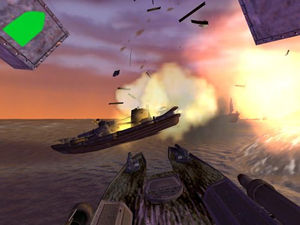 So what’s next for the Xbox? One thing I’m most looking forward to is thelaunch of Xbox Live, the online gaming community from Microsoft, whichwill make use of the console’s broadband connection. Reports have alreadycome through that many people have got their Xbox online already by using itin conjuction with their PC and the right website, but if I understand itcorrectly, I’d need a hub in order to link my PC together with the Xbox first,which is something I don’t have so I’ll wait for the official launch.
So what’s next for the Xbox? One thing I’m most looking forward to is thelaunch of Xbox Live, the online gaming community from Microsoft, whichwill make use of the console’s broadband connection. Reports have alreadycome through that many people have got their Xbox online already by using itin conjuction with their PC and the right website, but if I understand itcorrectly, I’d need a hub in order to link my PC together with the Xbox first,which is something I don’t have so I’ll wait for the official launch.
Microsoft are also committed to spending $2bn over the next five years promotingthe Xbox so it’ll be intriguing to see what happens. It’s now down to thegames developers to put the required effort into their gaming products instead ofmaking us wonder “looks nice, but.. so?”, as I alighted to earlier,since we’re finally getting arcade graphics like we’re used to outside our ownhomes and with the price drop to £199, I already know some people whohave gone out and bought one in addition to their PS2.





Reviewer of movies, videogames and music since 1994. Aortic valve operation survivor from the same year. Running DVDfever.co.uk since 2000. Nobel Peace Prize winner 2021.
